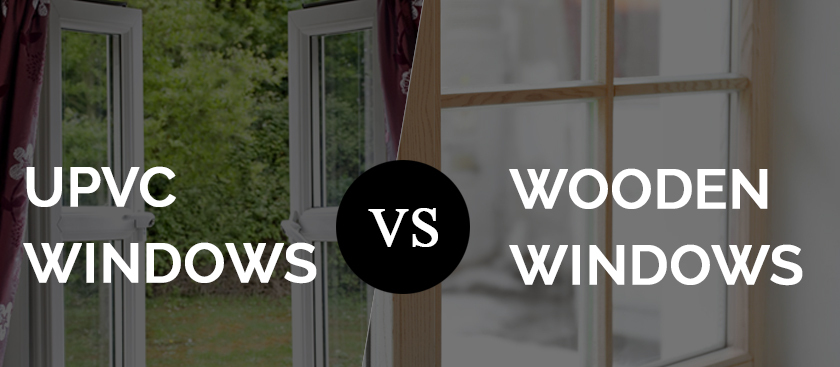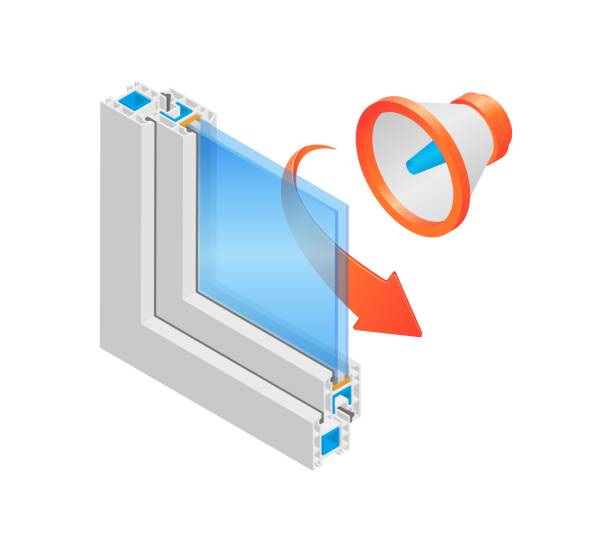Material Showdown: Compare the Benefits of UPVC with Traditional Materials
When it comes to choosing the ideal materials for your home’s doors and windows, the decision can be overwhelming. You might wonder whether to stick with traditional options like wood or aluminum or explore the benefits of modern UPVC. In this material showdown, we’ll explore the advantages of UPVC over traditional choices, so you can make an informed decision for your home renovation.
- Energy Efficiency: UPVC Takes the Lead When it comes to energy efficiency, UPVC outshines traditional materials like wood and aluminum. UPVC windows and doors offer excellent thermal insulation, reducing heat transfer in and out of your home. This property ensures your living spaces stay comfortable throughout the year while cutting down on energy consumption. Unlike wood, which may warp or rot over time, UPVC’s durability ensures its insulating properties remain intact for years to come.
- Durability: UPVC Stands the Test of Time One of the key factors that sets UPVC apart from traditional materials is its exceptional durability. While wood may be susceptible to rot, insect damage, and warping due to moisture, UPVC is resistant to these issues. It is not prone to rust or corrosion like aluminum, making it an excellent choice for coastal areas or regions with harsh weather conditions. UPVC’s ability to withstand the elements ensures a long lifespan for your doors and windows, providing value for your investment.
- Low Maintenance: UPVC Saves You Time and Effort When it comes to maintenance, UPVC takes the burden off homeowners. Unlike wood, which requires regular painting and sealing to maintain its appearance and structural integrity, UPVC windows and doors are virtually maintenance-free. A simple wipe with a damp cloth is all that’s needed to keep them looking fresh and clean. Aluminum, on the other hand, may require periodic repainting and can be prone to dents and scratches, increasing maintenance efforts.
- Aesthetics: UPVC Offers Versatility and Style UPVC doors and windows are available in a wide range of designs, finishes, and colors, making them a versatile choice for any architectural style. Whether you’re aiming for a contemporary look or a classic charm, UPVC can match your vision. While wood exudes natural beauty, it may require frequent refinishing to maintain its aesthetic appeal. On the other hand, aluminum’s design options may be limited compared to UPVC’s diverse choices.
- Eco-Friendly: UPVC Takes a Green Approach For environmentally conscious homeowners, UPVC is an eco-friendly choice. It is a recyclable material, which means it can be repurposed and reused, reducing its impact on landfills. In contrast, wood requires the cutting down of trees, contributing to deforestation, while aluminum production consumes significant energy and resources. Opting for UPVC doors and windows aligns your home renovation with sustainability goals.
- Sound Insulation: UPVC Creates a Peaceful Abode In the battle of sound insulation, UPVC triumphs over traditional materials. UPVC’s excellent acoustic properties help keep external noises at bay, creating a peaceful and quiet living environment. Wood may offer some degree of sound insulation, but it can’t match UPVC’s performance in minimizing unwanted noise intrusion. Aluminum, being a metal, may allow more sound transmission, leading to potential disturbances in your home.
Energy Efficiency Face-Off: Analyze the Cost-Saving Advantages of UPVC over Traditional Options
When it comes to the cost-saving benefits of your home’s doors and windows, energy efficiency plays a pivotal role. In this energy efficiency face-off, we’ll delve into the advantages of UPVC over traditional options like wood and aluminum, helping you understand how UPVC can save you money in the long run.
- Energy Savings: UPVC Takes the Lead When it comes to energy savings, UPVC outperforms traditional materials. UPVC windows and doors offer excellent thermal insulation, keeping your home cool in summer and warm in winter. This means reduced reliance on heating and cooling systems, leading to significant energy cost savings over time. Unlike wood, which may warp and create gaps, and aluminum, which is a conductor of heat, UPVC maintains a tight seal, preventing energy wastage and ensuring your comfort all year round.
- Longevity: UPVC Provides Lasting Value Investing in UPVC doors and windows translates to long-term cost savings. UPVC’s exceptional durability ensures it can withstand the test of time, outperforming wood and aluminum in terms of longevity. Unlike wood, which may require frequent maintenance and replacements due to rot and decay, and aluminum, which can be prone to corrosion, UPVC’s resistance to weathering ensures it remains in top-notch condition for years. This longevity minimizes the need for costly replacements, giving you more value for your investment.
- Low Maintenance: UPVC Saves You Time and Money When it comes to maintenance costs, UPVC emerges as the clear winner. UPVC doors and windows are virtually maintenance-free, requiring only occasional cleaning to keep them looking fresh and new. Unlike wood, which demands regular painting, staining, and sealing, and aluminum, which may need repainting and dent removal, UPVC’s low-maintenance nature saves you both time and money. You can enjoy a hassle-free experience with UPVC, with more resources to allocate to other essential aspects of home maintenance.
Weather-Resistance Battle: Discover How UPVC Stands Strong Against Various Weather Conditions
When it comes to withstanding the unpredictable forces of nature, UPVC emerges as a formidable contender. In this weather-resistance battle, we’ll explore how UPVC proves its mettle against a range of weather conditions, ensuring your home remains a safe and secure haven.
- Rain or Shine: UPVC Keeps Water Out UPVC’s exceptional weather resistance makes it a reliable choice for protecting your home against rain and moisture. The non-porous nature of UPVC prevents water from seeping through, unlike wood, which can swell and rot when exposed to constant rain, and aluminum, which may corrode over time. With UPVC doors and windows, you can rest assured that your home’s interior remains dry and comfortable, no matter how heavy the downpour.
- Battling Harsh Winds: UPVC Stands Tall When strong winds come knocking, UPVC doors and windows stand tall as a reliable shield. The robust construction of UPVC, along with its multi-chambered profile, provides exceptional structural integrity, preventing wind from causing damage or drafts. In comparison, wood may be susceptible to warping and bending, and aluminum might conduct heat, making it less effective against temperature changes caused by gusty winds. UPVC’s resilience ensures your home remains well-insulated and secure during storms and windy conditions.
- Sun’s Unyielding Rays: UPVC Remains Unscathed In the relentless face of the sun’s powerful rays, UPVC maintains its strength and appearance. Unlike wood, which can fade, crack, and splinter when exposed to UV rays, and aluminum, which may become hot to the touch, UPVC’s UV-resistant properties keep it looking pristine for years. UPVC doors and windows retain their color and finish, requiring minimal maintenance, even in areas with intense sunlight. This ability to withstand the sun’s effects ensures your home remains aesthetically pleasing and structurally sound throughout the seasons.
Making an Informed Decision: Tips for Selecting the Best Fit for Your Home Renovation Needs
When it comes to embarking on a home renovation journey, choosing the right materials for your doors and windows is crucial. With a myriad of options available, making an informed decision becomes essential to ensure your renovation project is a resounding success. In this guide, we will provide you with expert tips to help you select the best fit for your home renovation needs.
- Assess Your Needs: Prioritize Functionality and Aesthetics Before diving into the vast world of door and window materials, take a step back and assess your needs. Consider the specific functionality you desire from these elements. Are you seeking energy efficiency, noise reduction, or enhanced security? Additionally, ponder the aesthetics that align with your home’s architectural style. Your choices should strike a balance between functionality and visual appeal to create a harmonious living space.
- Evaluate Material Characteristics: UPVC vs. Traditional Options When it comes to materials, UPVC emerges as a top contender due to its numerous advantages over traditional alternatives. UPVC offers exceptional energy efficiency, low maintenance, and weather resistance. It does not rot, corrode, or require frequent repainting. In contrast, wood may add warmth and charm but demands more upkeep, while aluminum boasts strength but may not be as energy-efficient. Weigh the pros and cons of each material to make an informed choice that aligns with your priorities.
- Consider Budget and Longevity: A Wise Investment Renovating your home is an investment in your property’s future. As you make your decision, consider the long-term benefits of each material and its impact on your budget. UPVC may have a slightly higher upfront cost than some traditional options, but its durability and energy-saving properties can lead to significant cost savings over the years. Remember that quality often comes with a price, and investing in high-quality materials like UPVC can pay off in the long run.
- Seek Professional Guidance: Consult Experts in Renovation Navigating the world of home renovation materials can be overwhelming. When in doubt, seek guidance from professionals in the field. Consult with reputable renovation experts or door and window specialists who can assess your needs and provide personalized recommendations. Their expertise can prove invaluable in helping you make the right decision for your home. Additionally, explore customer reviews and testimonials to gain insights into the experiences of others who have already undertaken similar projects.


